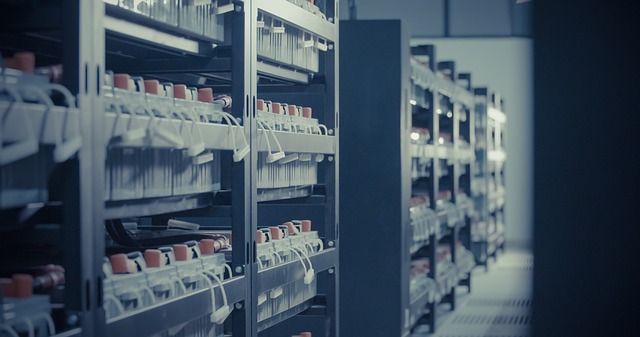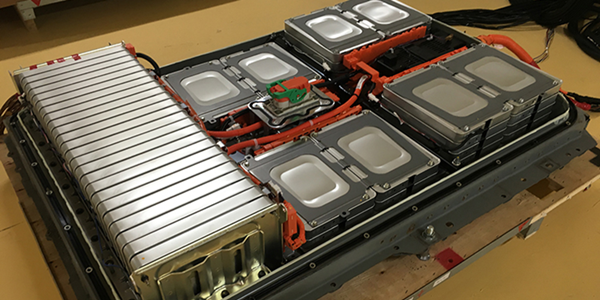Comparison of NiMh and Li-ion Batteries
Nov 23, 2019 Pageview:1654
Are NiMh batteries and Li-ion batteries the same?
NiMH batteries
Nickel Metal Hybrid battery (NiMh) is a form of rechargeable batteries. It has a chemical reaction at the positive electrode similar to the chemical reaction that happens in the nickel-cadmium cell. The difference occurs in the negative electrode, as the NiMh battery uses a hydrogen-absorbing alloy rather than cadmium. A nickel Metal Hybrid battery has two to three times the capacity of an equivalent nickel-cadmium battery of the same size. It has an energy density that is close to the energy density of a lithium ion battery.
NiMH batteries are used widely in hybrid cars, a survey was done in 2008 estimated that over two million hybrid cars worldwide were made using the NiMh batteries.
In some areas of the world like the European Union, the NiMh batteries have replaced the nickel-cadmium batteries in their applications.
In Japan, around 22% of all portable rechargeable batteries that were sold in 2010 were NiMh batteries. However, this percentage has been declining due to the rapid technological advances in the field of Li-ion batteries.
Li-ion batteries
Lithium-ion batteries are used for almost all electronic devices and electronic vehicles. Despite being more expensive than conventional alkaline batteries, Lithium-ion batteries have a much longer lifespan.
Lithium-ion batteries are made from what are called cells. Every cell of those is composed of three components; a positive electrode, a negative electrode, and a chemical component called an electrolyte between the positive and negative ones.
The positive electrode in the cell is designed from Lithium-Cobalt oxide. The negative electrode is designed from graphite. The electrolytes are such as oxides and sulfides. The electrolyte must have a long shelf life and offer high mobility for Lithium ions. The electrolyte can be liquid, polymer, and solid-state ones.
Lithium-ion batteries have the same working mechanism. When the battery is being charged, the Lithium-cobalt oxide "the positive electrode", gives some of its lithium ions, these ions move throughout the electrolyte to the negative electrode "the graphite" and subside there. The battery during this process store energy. After the charging process and during discharging; the Lithium-ions move back across the electrolyte from the negative electrode to the positive once again, which in turn produces energy that powers up the device the battery is attached to.
Can you use NiMh charger for Li-ion batteries?
Although Li-ion batteries and NiMh batteries are two rechargeable batteries that are used in similar applications, they have completely different chemical properties than one another. Li-ion batteries deliver more power than the NiMh batteries, almost up to three times more. The Li-ion batteries also can operate at higher voltages than those NiMh batteries operate at. However, NiMh batteries are safer than the Li-ion batteries in cases of overcharging due to the absence of the reactive Lithium element.
Both the Li-ion and NiMh batteries require sophisticated chargers. However, they both have different philosophy of charging. The Li-ion batteries have an inner circuit that monitors the charging rate and cuts off the power when a problem is detected. There are two identical Li-ion batteries that are why Li-ion chargers offer a variety of variable voltages that can accumulate the change in each battery.
NiMH chargers lack the safety features needed for Li-ion batteries. That is why the chargers of the NiMh batteries are different than those of the Li-ion batteries.
It is extremely dangerous to charge Li-ion batteries using NiMh batteries chargers.
Characteristics of NiMh and Li-ion batteries
NiMH batteries
NiMH batteries have less capacity than that of Li-ion batteries. They do not have any memory effect. They have an operating temperature of between -5 to 95 degrees Fahrenheit. They have life cycles of approximately 500 to 800 cycles. The NiMH batteries are safer than the Li-ion batteries especially in events of overheating and overcharging.
The NiMH batteries are better for the environment than the nickel-cadmium batteries.
Li-ion batteries
Unlike conventional batteries, Lithium-ion batteries have built-in electronic controllers. These controllers regulate how the batteries charge and discharge. These controllers prevent overcharging and overheating that can cause Lithium-ion batteries to explode in some cases.
During the charging and discharging process in the Lithium-ion batteries, electrons flow in the opposite direction of the movement of the ions around the outer circuit. It is important to note that electrons do not flow throughout the electrolyte itself. The electrolyte is effectively an insulating barrier and it does not affect the movement of the electrons.
Ions movement throughout the electrolyte and electrons moving around the external circuit in the opposite direction are two interconnected processes. If either of these movements stops the other stops too. When the battery is completely discharged and ions stop moving through the electrolyte, the electrons stop moving at the same time through the outer circuit. That is why you lose power in your device.
Discharging happens at a large rate when the device powered by the Lithium-ion battery is on; however, discharge also occurs even when the device is powered off. That is one downside for the Lithium-ion batteries.
- Prev Article: Can you charge lithium batteries with a NiCD charger?
- Next Article: Lithium Iron Phosphate Battery Pros and Cons
Leave Message
Hottest Categories
-
Hottest Industry News
-
Latest Industry News











